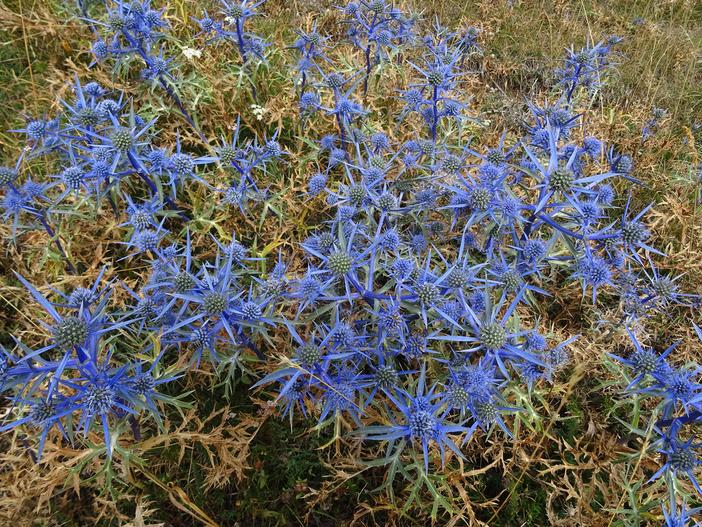Amethyst Eryngo
(Eryngium dilatatum)
Amethyst Eryngo (Eryngium dilatatum)
/
/

Olive Titus
CC BY 2.0
Image By:
Olive Titus
Recorded By:
Copyright:
CC BY 2.0
Copyright Notice:
Photo by: Olive Titus | License Type: CC BY 2.0 | License URL: https://creativecommons.org/licenses/by/2.0/ | Uploader: olive.titus | Publisher: Flickr





















Estimated Native Range
Summary
Eryngium dilatatum, commonly known as Amethyst Eryngo, is a perennial herb that can be deciduous or semi-deciduous depending on the climate. It is native to coastal areas, rocky slopes, and dry grasslands of the Iberian Peninsula and Morocco. This plant typically grows to a height and width of 1-2 feet (0.3-0.6 meters), forming a clump of deeply lobed leaves with a spiny texture. The flowers are a striking metallic blue to amethyst color, blooming in dense, thistle-like heads from late spring to summer, and are highly attractive to pollinators such as bees and butterflies.
Amethyst Eryngo is valued for its unique flower color and architectural form, making it a distinctive addition to gravel gardens, xeriscapes, and coastal plantings. It is also used in dried flower arrangements due to the long-lasting nature of its blooms. This plant is drought-tolerant once established, requiring minimal maintenance and water, and thrives in well-drained soils. It prefers full sun exposure to develop its best color and form. While generally disease-free, it can occasionally suffer from root rot if grown in poorly drained soils. Amethyst Eryngo is not known for being invasive and does not typically present problems with aggressive roots or spreading.CC BY-SA 4.0
Amethyst Eryngo is valued for its unique flower color and architectural form, making it a distinctive addition to gravel gardens, xeriscapes, and coastal plantings. It is also used in dried flower arrangements due to the long-lasting nature of its blooms. This plant is drought-tolerant once established, requiring minimal maintenance and water, and thrives in well-drained soils. It prefers full sun exposure to develop its best color and form. While generally disease-free, it can occasionally suffer from root rot if grown in poorly drained soils. Amethyst Eryngo is not known for being invasive and does not typically present problems with aggressive roots or spreading.CC BY-SA 4.0
Plant Description
- Plant Type: Herb
- Height: 1-2 feet
- Width: 1-2 feet
- Growth Rate: Moderate
- Flower Color: Blue, Purple
- Flowering Season: Spring, Summer
- Leaf Retention: Deciduous
Growth Requirements
- Sun: Full Sun
- Water: Low
- Drainage: Medium, Fast
Common Uses
Bank Stabilization, Bee Garden, Bird Garden, Butterfly Garden, Deer Resistant, Drought Tolerant, Low Maintenance, Rabbit Resistant, Rock Garden, Salt Tolerant, Showy Flowers
Natural Habitat
Coastal areas, rocky slopes, and dry grasslands of the Iberian Peninsula and Morocco
Other Names
Common Names:
Scientific Names: , Eryngium bourgati, Eryngium dilatatum, Eryngium amethystinum var. dilatatum, Eryngium purpuratum,
GBIF Accepted Name: Eryngium dilatatum Lam.